Kimble Electric Co's variable-speed electric motors were used on wood lathes, especially those from Oliver Machinery Co.
The company dates back to 1909 and probably earlier, and was presumably founded by Illinois motor designer Austin Kimble. They were in business until at least the late 1940s, making motors and electro-mechanical motor controllers. So far as we can tell, the primary applications for Kimble electrics were lathes, assembly machinery, and printing presses. By 1950 the Kimble printing-press electrics were being made by Star-Kimble Electric Co., and by the following year that business had gone to Miehle Printing Press Co.
The first Kimble drive was patented in 1909, and the design was improved in series of patents (granted to Kimble design engineer John D. Nies) until 1922 or 1923, when it continued virtually unchanged until about the late 1940s when it was discontinued. Kimble's motors and related controllers were complex but sturdily built. Even though all Kimble drives are over 50 years old, and some are over 80 years old, many of them are still running. They are sufficiently complex that few people would attempt anything but the simplest repairs.
The following subsections describe the four basic types of the Kimble single-phase, variable-speed motor headstock that were offered on the small (12" swing) Oliver lathes. All used the bed, tool rests and holders, tailstock, and legs initially designed for use on the No. 19 Speed Lathe. Where the No. 19 had a belt-drive and countershaft, the variations of the No. 51 substituted the Kimble direct-drive motor headstock. No. 51's with 4-speed, 3-phase motor headstocks were also produced but these are not described in the type study below.
Variable-speed Oliver headstock Type I
The Type I Kimble single-phase lathe head first appeared in Catalog No. 20 of 1917-18. On this version, the speed controller is mounted behind the motor. Speed is changed by moving either of two handwheels mounted above the motor. These may be found as either No. 51-A (short bed), or 51-B (long bed).
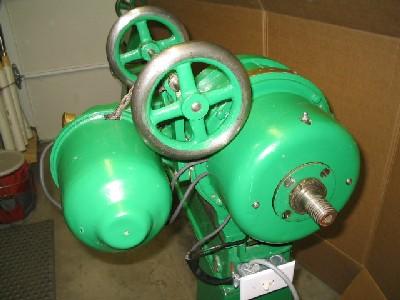
Type I Kimble drive on an Oliver 51-B lathe belonging to Jeff McVey. Photo Index entry 889.
Variable-speed Oliver headstock Type II and II-B
The Type II Kimble drive was first shown in Oliver's Catalog No. 22, around 1922. This type has the speed controller mounted atop the motor. Speed is controlled by a handwheel at the front of the motor.
The first variant is the Type II. From serial number records, it appears that this variant was only offered for approximately one year.
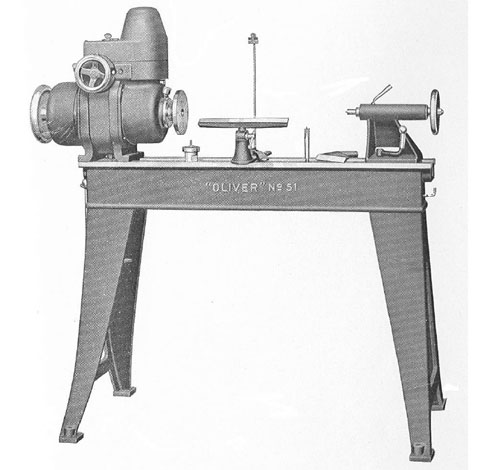
Catalog cut of Type II Kimble head lathe.
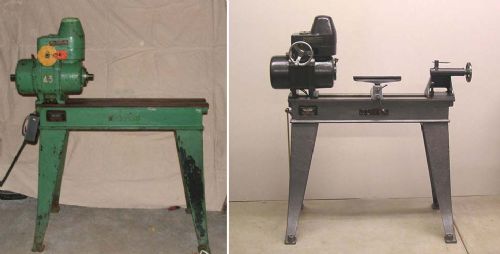
Type II Kimble drive on an Oliver 51-A lathe belonging to Ray Muno. Photo Index entry 3773.
By 1923 the Type II-B was introduced. The external differences are subtle. The Type II has a cone shaped casting covering the governor. The Type II-B has a dome shaped casting. The major difference is that on the Type II-B, the governor housing can be removed as a unit with the governor assembly intact. With the Type II, the governor is integral with the main unit.
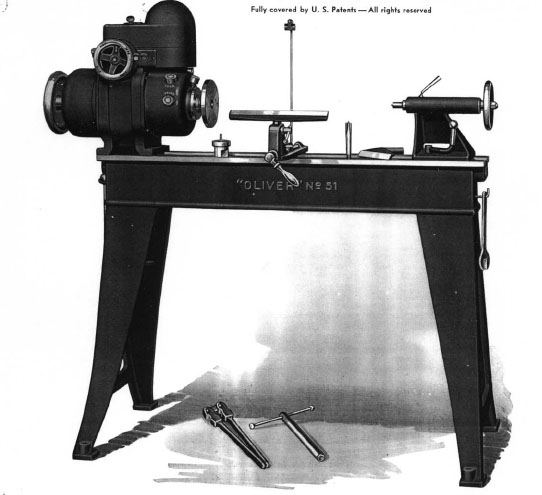
Catalog cut of Type II-B Kimble head lathe.
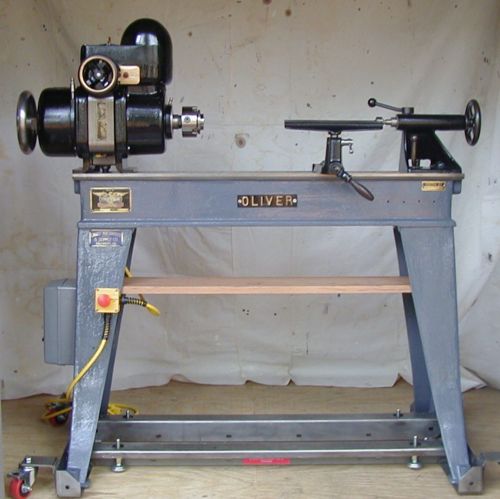
Type II-B Kimble drive on an Oliver 51-B lathe belonging to Mark DeCain. Photo Index entry 3779.
Current evidence suggests that the Type II-B was in production until the mid 1930s. This seems to be the most common version, as represented by OWWM Photo Index entries 2634, 2726, 3773, and 3779. These models are also designated either 51-A or 51-B.

Type II Kimble drive on an Oliver 51-B lathe belonging to Mark DeCain. Photo Index entry 3779.
Variable-speed Oliver headstock Type III
Type III was in production from the mid 1930s until the early 1940s. This edition has the speed control mechanism completely enclosed inside what would appear to be a very long motor housing. It was dubbed the No. 51-K, and features spindle lock and brake buttons in addition to the front-mounted speed control handwheel. This model is pictured in OWWM Photo Index entry
2186.
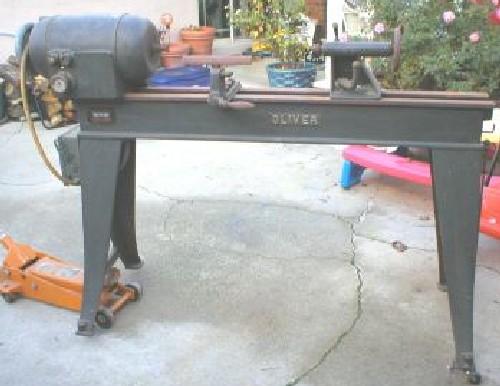
Type I Kimble drive on an Oliver 51-K lathe belonging to Jeff McVey. Photo Index entry 2186.
Variable-speed Oliver headstock Type IV
The Type Four debuted in the early 1940s. Production continued into the 1950s. It is very similar to the earlier Type II, except spindle lock and brake buttons have been added. It was also called a No. 51-K. The Type Three was likely dropped because its construction made internal repairs difficult. The Type IV, like the Type II, is easily disassembled for access to all parts. OWWM Photo Index entry
2898 illustrates this type.
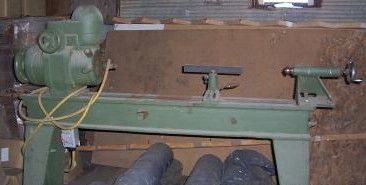
Type I Kimble drive on an Oliver 51-K lathe. More pictures of this machine.
Information Sources
- Most of the information here came from patents. Thanks to Jeff McVey and Ray Muno for providing patent dates.
- The 1912 work, Chicago: Pictorial and Biographical, Volume II, provided information on Perkins B. Bass, who was primarily engaged in the real estate business but was also the president of Kimble Electric Co.
- A Photo Index entry shows Tony Cruz's 20" Monarch bandsaw (sold by DeWalt and presumably made by American Saw Mill Machinery Co.) This bandsaw has a Star-Kimble single-speed motor setup, which suggests that all of Kimble Electric Co. became Star-Kimble of Bloomfield, NJ.
- The Oliver No. 51 single-phase Kimble drive type study is courtesy of Jeff McVey.